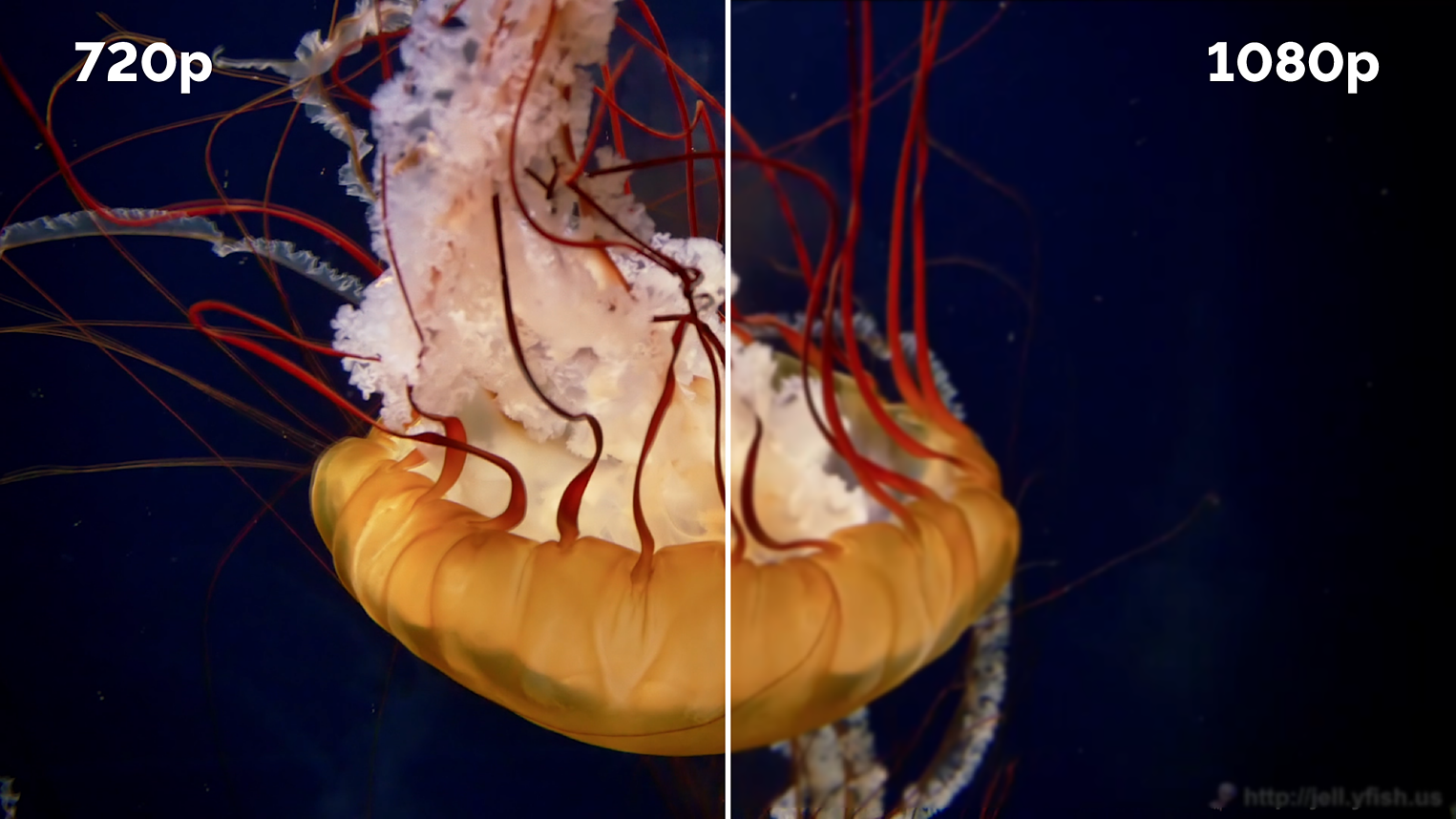
BoxCast Team • January 17, 2019
The common belief is that more pixels means a higher-quality picture for viewers. But this isn’t necessarily true, thanks to the video compression process.
When encoding for live streaming, hardware and software encoders compress raw video using techniques like chroma subsampling, spatial image compression, and temporal motion compensation to reduce the bandwidth of the original video to about 1/1000th of its original size.
For a given encoded video bit rate, the compression algorithm will be able to achieve a better encoded video on a smaller video than on a larger video. In other words, the number of “encoded bits per pixel” is higher for lower resolutions. What this means is that, depending on your video content (is it very static, like a conference speaker, or more dynamic, like a basketball game?) and video bit rate, your video may actually look better to viewers at 720p than at 1080p.

Here’s one example: we took the very popular “Jellyfish” video (commonly used in the industry for video testing) and encoded it to 4 Mbps at both 1080 and 720. We then used a tool from Netflix called VMAF (Video Multi-Method Assessment Fusion) to compare the encoded video to the original.
The VMAF tool is essentially an algorithm for asking how an actual human would perceive the quality of an encoded video, providing scores from 100 (“exactly identical”) to 0 (“completely different/unwatchable”). While the 1080p video received a score of 73.1, the 720p video received a score of 76.8—meaning human viewers would actually prefer to watch the 720p video rather than the 1080p video.
We performed the same experiment (using H.264) across four different kinds of videos and found that on average, for bit rates less than 7 Mbps, 720p videos had a higher perceptual quality than 1080p videos. Doing the same experiment, but using HEVC (which is used by the BoxCaster Pro with the BoxCast Platform), 1080p beat out 720p at bit rates over 2.2 Mbps.
If you take nothing else away from this article, remember this: unless you’re using HEVC, or both you and your viewers have very high internet bandwidth, your perceptual video quality will almost certainly be better at 720p than at 1080p.
Here's some further reading you might find interesting:
4K Live Streaming: The Right Questions to Ask
Why Are There Two Black Bars on the Sides of My Video? (Aspect Ratio)